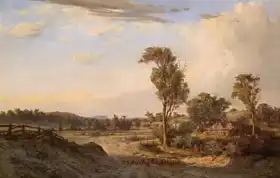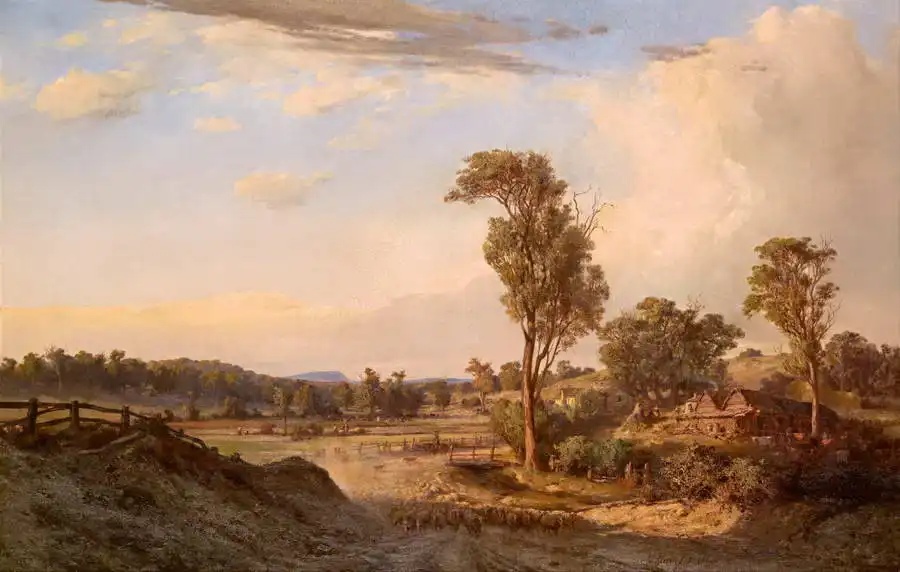About this finishing
Print. The image is printed on the top quality 10-ink HP Z9PS printer on HP matte 270 g / m2 paper. You can choose any size to an accuracy of 1 cm. A margin of 5 cm around the image is added to the size of the motif.


You can find a detailed description about our finishings
here.
Sunny afternoon in Templestowe
The painting depicts an idyllic landscape with pastures and trees in the foreground. In the background you can see the houses covered with roofs and the sky with changing clouds reflecting the sunset. On the right, large trees can be seen dominating the landscape. A river or stream runs through the center of the scene, and mountains on the horizon are subtly hinted in the distance. The image has a peaceful and slightly nostalgic feel.
This description was created by artificial intelligence, please be indulgent.
Prevailing color of this fine art print is green and its shape is landscape. This image is printed on demand - you can choose material, size and finishing.
Abram-Louis Buvelot (1814-1888), a Swiss landscape artist from the
Realism period of the city Vaud. Buvelot received his art education at a school in Lausanne. For a while, he stayed in Paris, but in 1835, he left after a few months to travel to Brazil to his uncle, who owned a coffee plantation. In Rio de Janeiro, the artist exhibited two paintings of landscapes, which immediately gained attention and appreciation. Every year, he repeatedly contributed his work to this exhibition, for which he earned a gold medal in 1846 and the title of the Knight of the Order of the Rose. Before returning to Europe in 1852, he created a series of 18 images of different views of Rio de Janeiro. In Europe, however, he did not experience such fame. Vainly, he tried several times to employ himself as a photographer. Because money that his family is so urgently needed was running out, he went to Calcutta. Even here, however, he failed. He left his first wife and went to Melbourne. He began to paint landscapes (
Afternoon in Templestowe Between Tallarookem and Yea), and soon he was a well-known and popular artist. He began teaching externally at the National Gallery of Victoria. However, he was never accepted as its member. Six years after his death in 1888, the gallery was renamed the Buvelot Gallery in his honour.


